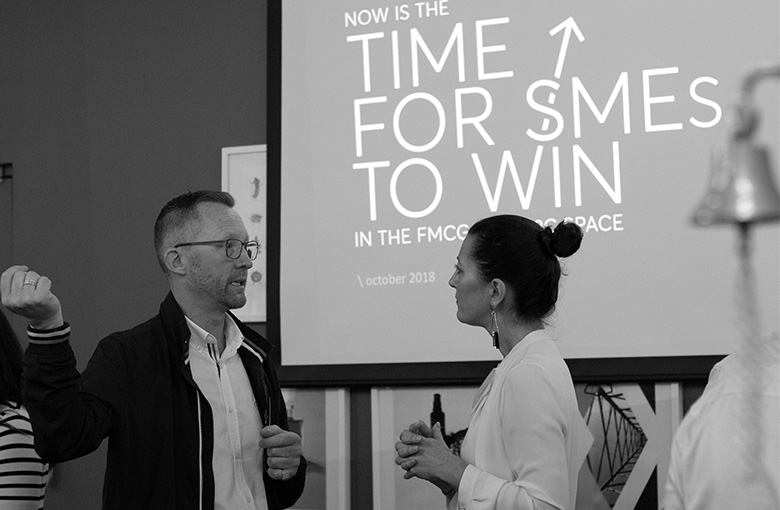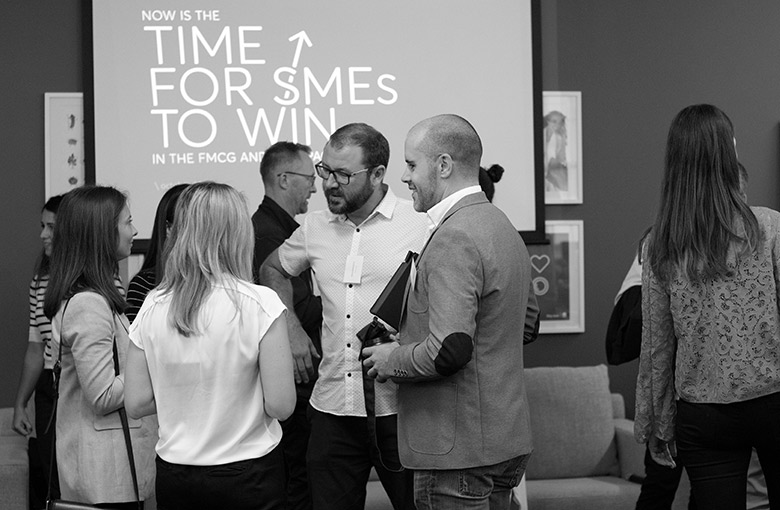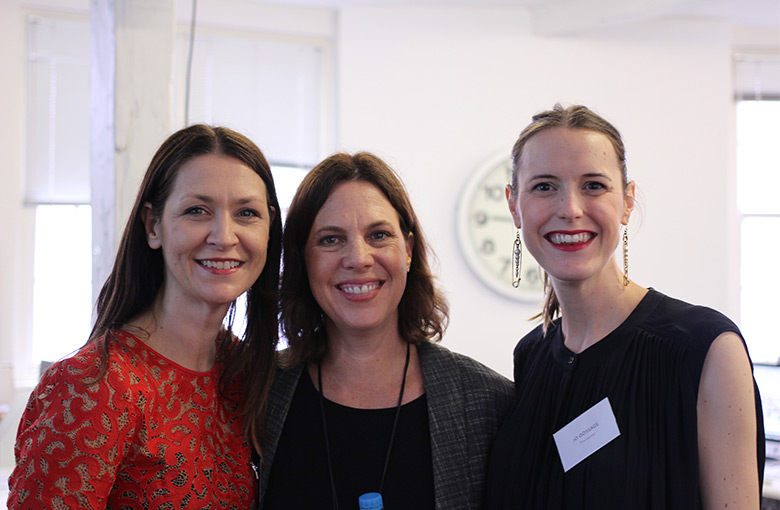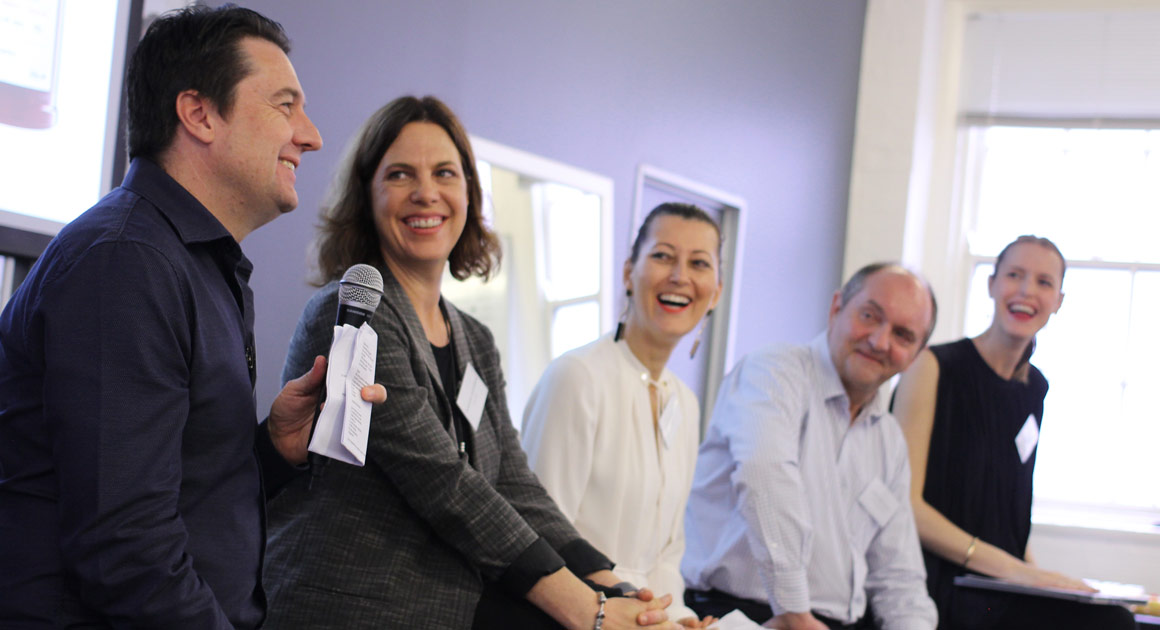5 ways SMEs can win in retail and FMCG
Just over a week ago we had the pleasure of hosting a panel discussion at Tiny Hunter on how SMEs can win in the FMCG and retail space. It was an insightful discussion with guest of honour Antony Paech, MD of Beerenberg, Jean-Yves Heude, ex CEO of Kelloggs ANZ, Sharlene Zeederberg from research company Leap Insight, and Emma Scott, the Lead Brand Strategist here at Tiny Hunter.
Before we reveal our top 5 takeaways for you to apply to your own brand, let’s first take a look at what’s currently happening in consumerland and consider why it is that SMEs can now win.
Market share is shifting away from multinationals and moving to smaller brands. There has been a huge shift in the landscape and there are a few influencing factors to note:
- Consumers are developing a mistrust of bigger brands. Consumers used to be loyal to big brands with little question of their quality or integrity. This has changed and a need for authenticity is driving consumers to engage with smaller, more transparent brands that are often more purpose driven.
- The shift from big broadcast. Big brands used to purchase prohibitively expensive ads on the few free-to-air channels to reach their customers, with few others ways to build awareness. The explosion of the digital landscape has done a lot to even the playing field. Brands large and small can engage in one to one conversations on far smaller budgets. Money does still help, but so does creativity, and courage, sometimes more apparent in the smaller businesses.
- Nationalised buyer processes and resourcing. It used to be that brands needed large sales forces, hitting the road to visit store after store, across the country. Getting product on shelves was a time consuming and resource heavy process. With the shifts to the way the likes of Woolworths and Coles work you can meet with a single buyer one week, and be stocked nationally a short time later (not that this is as easy as it sounds!).
- Manufacturing processes and technology. Brands used to invest huge amounts of money in owning factories and developing unique manufacturing process. This barrier has continued to shrink, with people now able to launch a business, and product range, with almost no expenditure using drop shipping suppliers.
We did cover a lot of ground during the discussion, but here are our top 5 takeaways about winning in the retail space:
- Range review and promotions. The supermarkets are pretty heavy handed in the way they negotiate, it’s not a relationship building ‘win win’ scenario like it used to be. It is crucial to be strategic in the way you approach both range reviews, and promotions. These need to be considered in all aspects of decision making – for example in terms of brand storytelling, what is the narrative for the buyer? Whilst they always want you to do promotions, how does that strategically align with your brand? What steps can you take to stand your ground and bet on the long game?
- Branding matters (a lot). Branding is how you differentiate yourself from your competition. And these days there is a lot of competition. Your brand work needs to be far more than a logo and collateral, it needs to be a strategic consumer-centric positioning that emotionally engages with your audience. As Anthony Paech said, ‘We realised other brands were telling better stories about their fake barns, than we were about our real barn’. Beerenberg’s strategic rebrand has delivered substantial growth and expansion.
- Understanding consumer behaviour is essential. There are 3 moments of truth in FMCG and one of them is on the shelf. It is critical every single centimetre of your pack has been strategically considered based on real consumer insights. Research is key here. Above all else it’s about clarity. Your pack needs to be seen and understood from about a metre away, it needs to be single minded and visual (people don’t want to read). And more often than not a consumer’s key driver is not what you think it might be. Do the research and design your cues and hierarchy accordingly.
- Innovate for long term success. Innovation is important, and it’s not only limited to product development. Innovation gives you a new reason to be talking to the buyer, a proactive rather than a reactive one too. Small to medium businesses are often more agile, and can innovate quickly, for example reacting to trends before a multinational has run their first meeting to discuss the possibilities. But again it’s crucial to get the consumer involved.
- Profitable marketing. Budgets can be tight, we all know that. But how can we be clever in the way we market to increase exposure to our desired audience, without it impacting the bottom line? Even if it’s not ‘profitable’ per se but at least break even, then the sky’s the limit. For example a brand might broker a deal with an airline, there is very little margin on the product itself, but the exposure to potential customers is immense.
If you would like to be invited to our next event you can sign up to our newsletter.





